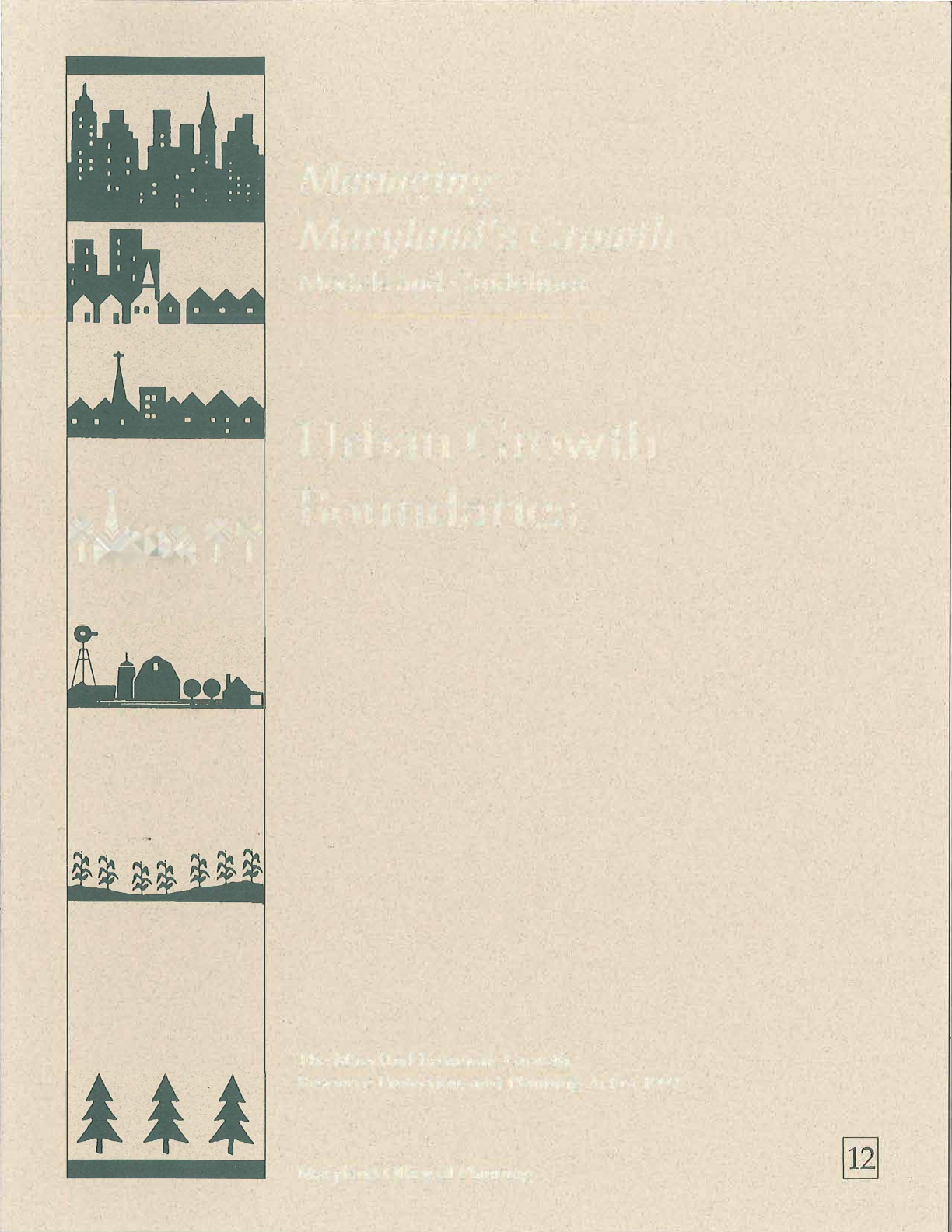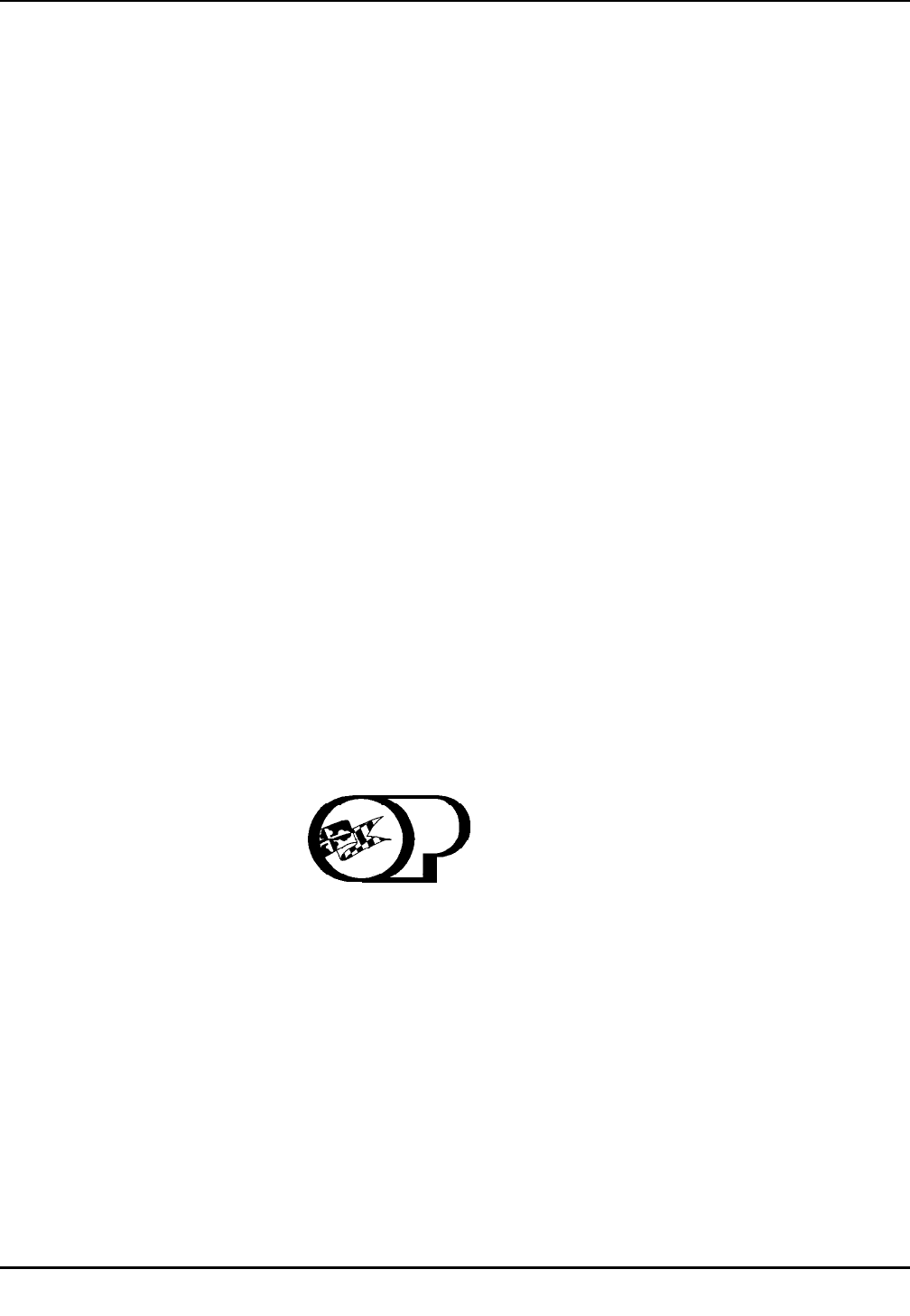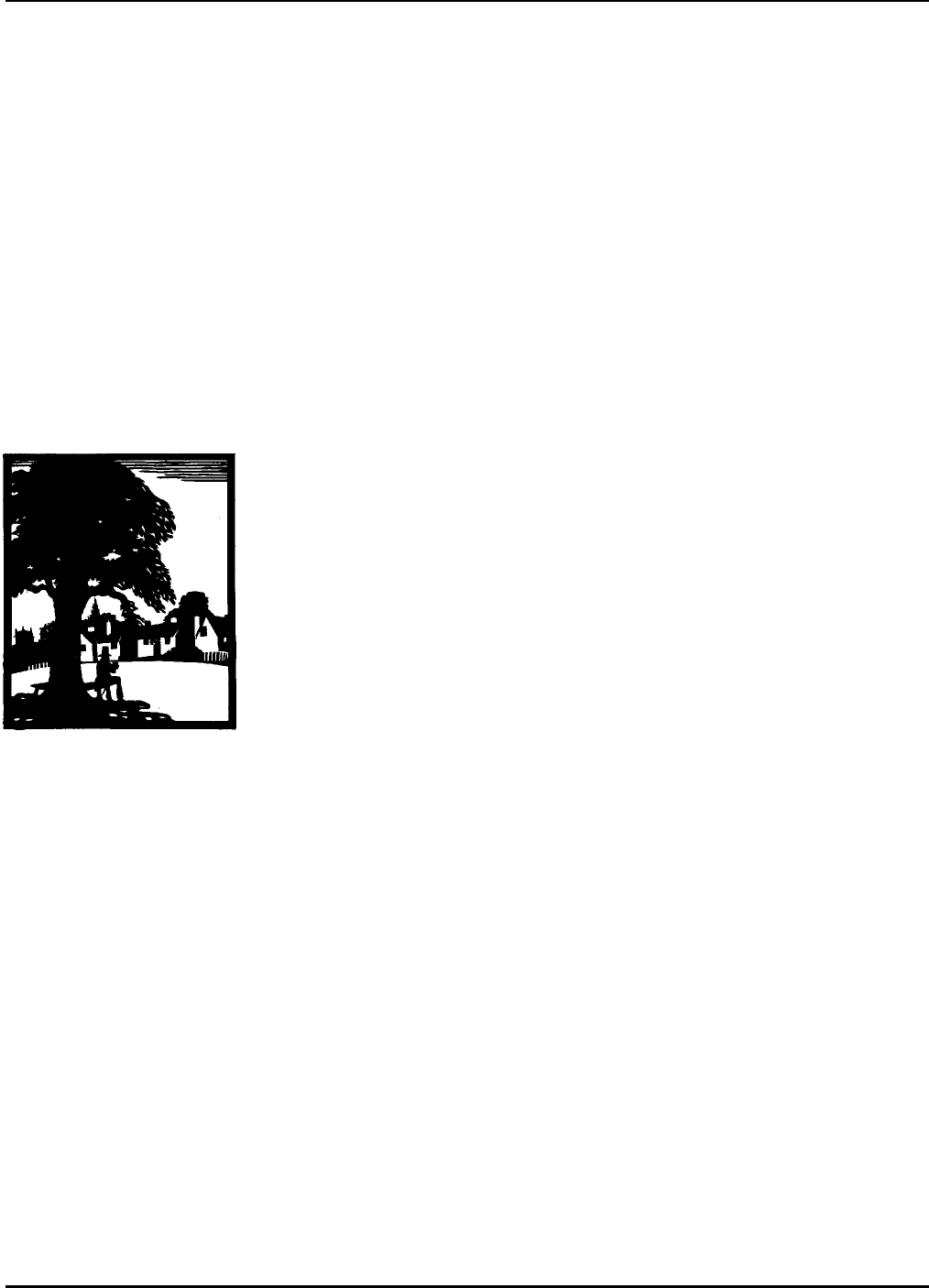
Managing
Maryland's Growth
Models and Guidelines
Urban Growth
,.\r.. ,,
Boundaries
The Maryland Economic Growth,
Resource Protection, and Planning Act of 1992
Maryland Office of Planning
This document may not reflect current law
and practice and may be inconsistent
with current regulations.

37
Maryland's Models and Guidelines Vol. 12-Urban Growth Boundaries
Prepared Under the Direction Of:
Mary Abrams
James T. Noonan
Principal Staff:
Mike Nortrup
Graphic Design:
Ruth O. Powell
Production & Printing Coordination:
Mark S. Praetorius
The Maryland Office of Planning wishes to thank the directors of county
and municipal planning agencies and their staff; the Cabinet Interagency
Committee and its Technical Support Group; the Economic Growth,
Resource Protection, and Planning Commission; the Subcommittees on
Interjurisdictional Coordination and Planning Techniques; and others
who so graciously gave of their time to review drafts of this publication.
This publication is printed on recycled paper.

38
Maryland's Models and Guidelines Vol. 12-Urban Growth Boundaries
The Maryland Office of Planning
State of Maryland
Parris N. Glendening, Governor
Maryland Office of Planning
Ronald M. Kreitner, Director
August, 1995
MARYLAND Office of Planning
This booklet was written and designed by the Comprehensive Planning
and Design Units of the Maryland Office of Planning as a service to local
governments and planning officials. The author is Mike Nortrup.
Graphic design and production are by Ruth O. Powell and Mark S.
Praetorius.
Additional copies are available from the Maryland Office of Planning, 301
West Preston Street, Baltimore, Maryland 21201-2365. Phone: (410) 225-
4562. FAX: (410) 225-4480.
Publication #95-09

1
Maryland's Models and Guidelines Vol. 12-Urban Growth Boundaries
TABLE OF CONTENTS
FOREWORD ......................................................................................................... 2
URBAN GROWTH BOUNDARIES IN OTHER STATES .................................................. 4
Oregon ....................................................................................................... 4
Thurston County, Washington ................................................................... 6
Minneapolis and St. Paul, Minnesota ........................................................ 7
Conclusion ................................................................................................. 8
GROWTH BOUNDARIES IN MARYLAND .................................................................. 9
Developing the Boundary ..........................................................................11
Impact Of Boundaries On Local Plans And Ordinances........................... 12
Administering the Growth Boundary ....................................................... 13
Assessing Urban Growth Boundaries in Maryland .................................. 13
METHODOLOGY USED IN CREATING THE URBAN GROWTH BOUNDARY ................. 16
The Basic Steps......................................................................................... 16
Identify Problems and Issues .................................................................... 17
Establish A Public Participation Process................................................... 18
Determine Boundary Goals ...................................................................... 18
Collect Data.............................................................................................. 19
Draw Boundary........................................................................................ 23
Prepare Public Information Program ........................................................ 24
Enact Interjurisdictional Agreements ....................................................... 24
Revise Plans and Ordinances ................................................................... 25
MAKING URBAN GROWTH BOUNDARIES SUCCESSFUL IN MARYLAND .................... 26
THE URBAN GROWTH BOUNDARY AND THE COMPREHENSIVE PLAN ..................... 31
BIBLIOGRAPHY .................................................................................................. 33
APPENDIX
Memorandum of Understanding Between Montgomery County and the
Cities of Rockville and Gaithersburg ......................................................... 34
OTHER PUBLICATIONS AVAILABLE...................................................................... 37

2
Maryland's Models and Guidelines Vol. 12-Urban Growth Boundaries
FOREWORD
At the core of growth and development issues around the country are
basic questions about where new development is to occur. This issue of
growth is intricately tied to questions of property rights, infrastructure
investment, and environmental protection. Where growth and develop-
ment are issues, such questions are faced by local governments on a
daily basis. Local governments have developed a variety of responses to
them, but a common theme is one of defining suitable areas for growth.
Approaches to defining such growth nodes can range from delineations
of service areas or definitions of adequate public facilities to strictly
defined urban growth boundaries. This publication will examine the use
of growth boundaries as a growth management mechanism.
In Maryland, an increasingly powerful force behind this, and all other
local governments’ efforts to control growth, is the Economic Growth,
Resource Protection, and Planning Act of 1992 (Planning Act). The
Planning Act encodes the Visions as the State’s official growth policy,
which will guide the myriad of development actions in Maryland.
Accordingly, the Planning Act requires that county and municipal plans
be amended so that they include and implement this overall State policy
guide. The first Vision states that “Development is concentrated in
suitable areas.”
A basic premise of the Planning Act is that it is a responsibility of local
governments, through their comprehensive planning processes, to define
those growth areas, whether by growth boundaries or other means.
This booklet is one of a series of Models and Guidelines published by the
Maryland Office of Planning to help local jurisdictions meet the chal-
lenges and opportunities presented by the Planning Act. This booklet
will outline the use of urban growth boundaries in Maryland and else-
where. It also will detail those actions that must be taken to make
growth boundaries successful.
An urban growth boundary is a line on a map used to mark the separa-
tion of rural land from land on which growth should be concentrated.
The concept can be traced at least as far back as the 16th Century when
England’s Queen Elizabeth I decreed that no building could be con-
structed within three miles of London’s city gates. This decree thus
created a greenbelt between the City walls and new development.
In recent years, American planners have also used this centuries-old
method of growth control. One intent, as in Elizabethan England, is to
protect open space lands. Another perhaps more pressing goal is to
reduce and contain urban sprawl. Because such boundaries frequently

3
Maryland's Models and Guidelines Vol. 12-Urban Growth Boundaries
represent a coordinated, interjurisdictional effort to determine where
urban development can, and cannot go, they can serve as a valuable
growth management tool.
For the purposes of this booklet an urban growth boundary is a line that
is a specific and integral element of a comprehensive plan. Regardless of
the method used to define the boundary, it differs from other techniques
to define appropriate areas for growth because it is proactive. An urban
growth boundary provides guidance to decision-makers regarding the
location of urban services and infrastructure. In its strongest form it can
be changed only through a formal amendment to a comprehensive plan.
Such lines cannot be moved as the result of incremental changes to
infrastructure service areas or boundaries.
“Urban Growth Boundaries” begins by examining how boundaries are
used elsewhere in the United States. The booklet then focuses on the
Maryland jurisdictions that use them. It contains an analysis of their
strengths and weaknesses and how urban growth boundaries can be
created and improved. To obtain information on boundaries in Mary-
land, the authors interviewed planners and other professional staff from
Baltimore, Frederick, Howard, Montgomery and Washington counties.
Planners from the cities of Frederick, Gaithersburg, Hagerstown and
Rockville were also consulted. Comprehensive plans and other relevant
documents from these jurisdictions also were examined as part of this
study.
This booklet is organized in five parts.
• Part I examines the uses and successes of urban growth bound-
aries around the United States.
• Part II examines the rationale for establishing growth boundaries
in Maryland. It discusses the methodology and criteria used to
determine boundary locations. It then explains how new deve-
lopment within boundaries is administered and examines the
success of boundaries in achieving their growth management
goals.
• Part III contains a checklist of suggested items to consider when
planning for, and drawing the urban growth boundary.
• Part IV provides guidance for actions to take and mechanisms to
use, if boundaries are to be successful in managing growth.
• Part V explains how urban growth boundary language can be
integrated into the comprehensive plan.

4
Maryland's Models and Guidelines Vol. 12-Urban Growth Boundaries
URBAN GROWTH BOUNDARIES IN
OTHER STATES
Oregon
It appears that the first application of the urban growth boundary con-
cept in the United States was in Lexington, Kentucky during the 1950’s.
The idea gradually spread. By late 1992, growth boundaries were a part
of statewide enabling legislation in six states. They also were used in a
number of cities and counties across this country.
Some jurisdictions in these other states have far more complex and
ambitious urban growth boundary programs than those in Maryland.
As in Maryland, the boundaries in those states enclose urban growth
areas which include both incorporated and unincorporated land. They
designate where urban growth exists or is planned, and areas where it is
discouraged.
Boundaries in these other states are established to accommodate growth
over a particular period, generally 20 years. Accordingly, in developing
boundaries, these jurisdictions make detailed calculations of land de-
mands for the appropriate period. These states generally require peri-
odic evaluations of their growth boundaries and adjustments to the lines
as necessary.
Because the scope is generally interjurisdictional, a cooperative regional
approach is used to make such boundaries successful.
Oregon’s 1973 Land Conservation and Development Act required all
incorporated cities to designate growth boundaries. All have done so.
The Portland urban growth boundary, established in the late 1970’s,
encompasses numerous cities as well as unincorporated land. The cities
adopt their own comprehensive plans. The counties’ comprehensive
plans cover the unincorporated land lying within the growth boundaries.
Much of the day-to-day management within each boundary is conducted
by the Metropolitan Service District, the nation’s only elected regional
government. The District approves the extension of public facilities and
provides guidelines for adjusting the Portland boundary. The District
also exerts some control over local zoning. For example, the District
requires that city zoning allow as many as 10 units per acre on lands that
will accommodate multifamily residential development.
The major purposes of Oregon’s urban growth boundary program are to
prevent sprawl and to protect agriculture and forestry: two of that state’s
leading economic sectors. An August, 1990 evaluation of Oregon’s
boundary program revealed that it had achieved some success. Rampant

5
Maryland's Models and Guidelines Vol. 12-Urban Growth Boundaries
sprawl outside the boundaries of the Portland metro area, for example,
had been drastically reduced.
The study, focussing on land development between 1985 and 1989, found
that in the Portland metropolitan area, only 9.0 percent of the single-family
units, 0.5 percent of the multiple-family units and 1.2 percent of the new
subdivision lots were outside the Portland urban growth boundary. No
significant commercial or industrial development occurred outside.
However, the study of the Portland metro area urban growth boundary
showed that 85 percent of residential subdivision lots that were approved
outside of the boundary lay immediately adjacent to that line. This pre-
dominately low-density development would act as an impediment to
moving the urban growth boundary outward. It also acts as a block to
the successful future urbanization of these areas. There remains a great
demand for such low-density residential development. There is diffi-
culty in economically serving this large-lot development with infrastructure.
Also, opposition to higher-density development inside the boundary has
intensified. Barriers have developed to moving the line outward because
strong interest groups, composed of local residents, oppose the line’s exten-
sion.
While sprawl was slowed outside the boundary, it continued inside.
Residential development within the Portland boundary between 1985
and 1989 was below allowable density. Single-family residential develop-
ment in the Portland metropolitan area occurred at only 68 percent of
allowable density. In the “urbanizable” portion of the boundary (defined
in the local plan as land available and suitable for development once
urban services are provided), single-family development densities were
only 59 percent of that allowed. Multifamily development was at 73 percent
of density allowed. To many observers, these “below-target” densities are
also sprawl. Still, the development has occurred in an area slated for
growth.
Infrastructure issues also exist. Vacant land in outlying areas within the
boundary is easy to develop. However, it is hard to serve with infrastruc-
ture because costly urban services cannot keep up with the demand. Older
urban areas, on the other hand, are easier to serve because the infrastruc-
ture is already in place. However, redevelopment is generally harder
than new construction because of difficulties in assembling adequate
land and higher land prices in more urbanized areas. There also are
practical difficulties in construction when the surrounding properties are
built up. Local opposition also can be an impediment to effective
redevelopment.

6
Maryland's Models and Guidelines Vol. 12-Urban Growth Boundaries
The Portland urban growth boundary is considered a qualified success.
As previously stated, it has drastically reduced sprawl in rural areas
beyond it. Because growth is strongly encouraged within the bound-
aries, the approvals of developments there are predictable. This predict-
ability shortens approval time and saves money for developers and
homebuyers. The Portland urban growth boundary has widespread
support because it has made growth more orderly and predictable.
Even though much growth is confined within the boundary, housing prices
there have not risen dramatically as some predicted would occur. Part of
the relatively low price rise results from the availability of major infrastruc-
ture for new development. Additionally, Oregon State has streamlined
development reviews, making them more predictable and less time-con-
suming. A final contributing factor in the lack of a rapid price rise lies in the
fact that there is vacant land available for new development plus ample infill
and redevelopment opportunity within the growth boundary.
In the early 1980’s, the Thurston Regional Planning Council, a County
regional planning agency, developed an agreement among the County
and three of its municipalities to establish an urban service area bound-
ary. The purpose of the boundary was to concentrate urban develop-
ment within planned growth areas, provide high-quality basic services at
lowest cost, and encourage orderly growth consistent with rational
provision of public services. The line would establish the outer limit of
urban development, annexation and urban service extension.
A 1986 evaluation showed that a majority (60 percent) of new housing
units were being built outside the three cities. Development within the
boundary was occurring below desired densities, often in a sprawl
pattern. In 1988, the four jurisdictions responded by creating a two-
tiered boundary featuring short-and long-term growth areas and
adopted an Urban Management Agreement to govern the responsibilities
of each jurisdiction. To slow sprawl, they attempted to stage the exten-
sion of utilities gradually outward from the urbanized core. The short-
term service area provides for growth over a ten-year period. The
long-term area is slated for urban growth and services over an 11 to 25
year period.
Their voluntary agreement outlines a common approach to growth and
the provision of public services and facilities. It also establishes stan-
dards to guide each jurisdiction’s land use planning decisions in a way
Thurston County,
Washington

7
Maryland's Models and Guidelines Vol. 12-Urban Growth Boundaries
that will achieve common growth management goals while leaving the
power with each jurisdiction to control its own land use. The agreement
allows minimal extensions of municipal services beyond the short-term
growth area. It also has established a joint land use planning process to
implement the boundary. The jurisdictions jointly agree on zoning,
densities and land uses in both the short-term and long-term areas. Some
cities adopted a policy of reimbursing the County when annexing land
on which the County had made a substantial capital improvements invest-
ment.
While extensive data are not yet available, it appears the boundary
program is a success. There have been few requests for subdivision
approvals in rural areas. Thurston County has supported the boundary
program by downzoning land outside the long-term boundary for very
low densities. Few utility extensions have gone beyond the short-term
growth area portion of the boundary, and none beyond the long-term
line.
This arrangement also is positive in terms of the intergovernmental
cooperation that has occurred through strictly voluntary agreements.
The previously-cited city/County land use and revenue sharing agree-
ments are examples. In addition, the current agreement calls for mutual
concurrence among the County and cities before revising the boundaries
of the urban growth area.
The Metropolitan Land Planning Act of 1976 gave the Metropolitan
Council limited planning authority over the Minneapolis/St. Paul metro
area, a seven-county region covering 3,000 square miles and home to two
million residents.
The Council uses plans for water and sewerage and other services to
control the location of development. Jurisdictions in the metro area are
required to prepare comprehensive plans that are consistent with the
Council’s regional plans for highways, transit, water and sewerage,
housing, solid waste management and health. Council authority, how-
ever, extends only to those areas considered of regional significance.
The Council and area jurisdictions also developed the Metropolitan
Urban Service Area (MUSA), where development would be encouraged
in some areas and discouraged in others. Urban expansion in each city is
negotiated with the Council in accordance with the regional comprehen-
sive plan. Service extensions are granted by the Council on a city-by-city
Minneapolis and
St. Paul,
Minnesota

8
Maryland's Models and Guidelines Vol. 12-Urban Growth Boundaries
basis, based on needs.
The MUSA and its associated policies have affected the pattern of develop-
ment in the region. New development in the rural areas of the MUSA has
declined dramatically since 1978, two years before the growth plan was
implemented. The areas where urban services are provided have expanded
in a manner consistent with guided growth. Major regional highways and
sewerage facilities have expanded only within the urban area. Neighboring
jurisdictions within the region are kept aware of each other’s plans to a
much higher degree than before the Act’s passage. Finally, the importance
and primacy of planning on a regional basis have been established.
There have been many, mostly minor, adjustments to the MUSA bound-
ary line over the years. Some cities have petitioned the Council for major
expansions into rural areas and rezoning requests are expected to follow.
These cities and counties had differing issues and problems that their
respective urban growth boundaries were intended to address. Like
Maryland, they experienced successes and failures. These jurisdictions
have generally achieved their goal of limiting sprawl beyond their
boundaries. However, low-density development and the bypassing of
developable land parcels nevertheless occurred inside boundaries. There
was also some pressure to extend development into rural areas.
Minnesota, Oregon and Washington also used the powers of regionalism
to plan their growth boundaries and encourage their success. In Minne-
sota and Oregon, regional authorities have at least some statutory pow-
ers to provide overall direction, planning and coordination. In
Washington’s Thurston County, this regionalism is achieved through
voluntary agreement. Regardless of the arrangement, the local jurisdic-
tions in these states must plan and provide services within a coordinated
and established regional framework. Local plans must be consistent with
regional goals and policies.
While each state implements its urban growth boundary program in a
different fashion, regional cooperation is a common element in all such
programs. For an urban growth boundary to successfully control growth,
it is imperative that the participating towns and counties develop coop-
erative planning, zoning, infrastructure and other mechanisms to stage
and guide development. While Maryland does not have the formally-
established regional organizations that are the conduit for interjurisdic-
tional cooperation in States such as Minnesota and Oregon, our need for
such cooperation is no less acute.
It is therefore important to examine how this all-important ingredient is
integrated into Maryland jurisdictions’ growth boundary programs and
Conclusion

9
Maryland's Models and Guidelines Vol. 12-Urban Growth Boundaries
GROWTH BOUNDARIES IN MARYLAND
The 1950’s saw the beginning of a population explosion in Maryland that
would more than double its population from 2,343,001 in 1950 to over
five million in 1994.
Much of this population growth resulted in large-lot residential sprawl
and supporting commercial development spreading out from the older
built-up population centers into the countryside. This new development
pattern consumed agricultural and environmentally-sensitive lands. The
pattern also resulted in a loss of community character in what had
formerly been rural settlements. Often it quickly overburdened the rural
road network, schools and other public services that local jurisdictions
had provided for these areas, forcing inefficient extensions of urban
facilities.
Accelerating growth also increased development pressures on vacant
land adjacent to municipalities. This led to ever-increasing municipal
efforts to annex prime development parcels. Municipal expansions,
however, often created conflicts with counties that envisioned different
uses for the land.
These growth-associated problems forced jurisdictions in Maryland to
adopt a variety of planning tools and other measures to control develop-
ment. Urban growth boundaries were one of the measures chosen to
encourage growth in selected areas. In the late 1960’s, Baltimore County
became the first Maryland jurisdiction to adopt such a boundary. Others
followed over the next decade.
The form of growth boundary used depends on the type of problem or
circumstance it is to address. In some instances, the boundary is simply
an annexation limit line that represents agreement between town and
county on what lands should ultimately be included in the municipality.
The development anticipated on these parcels is most likely to be the
more urban types of density/intensity that normally occur within mu-
nicipal limits. Frederick City and Frederick County, along with
Gaithersburg and Montgomery County, have such annexation limit lines.
Properties are included within those lines because they are adjacent to
the municipalities or because their annexation would eliminate irregulari-
ties in municipal boundaries. These properties also could be readily
served by municipal water, sewerage and other infrastructure.
A more complex solution is required where sprawl development reaches
far beyond municipal environs into the countryside. This type of pattern
creates more widespread problems. It consumes extensive amounts of
land. It overtaxes services or forces expensive and inefficient infrastruc-

10
Maryland's Models and Guidelines Vol. 12-Urban Growth Boundaries
ture extensions from either the town or county. It also endangers agricul-
tural land and sensitive environmental features.
Growth boundary lines created under these circumstances are intended
to do far more than simply designate parcels that should ultimately be
annexed. This type of boundary delineates a larger area, often at least
partially unincorporated, in which the county hopes to contain and
attract dense or intense development. This type of boundary is generally
created with the understanding that only very limited lower density
development may occur beyond its limits.
More so than with simple municipal annexation limits lines, this type of
urban growth boundary signifies a countywide effort to contain growth
near towns or built-up areas. These more extensive growth boundaries
appear in Baltimore, Frederick, Howard, Washington and Montgomery
counties. They demand close coordination between municipal and
county governments.
Baltimore County’s urban growth boundary, known as the Urban-Rural
Demarcation Line (URDL), includes all of the County’s urbanized land
around the City of Baltimore. The URDL also extends into some unde-
veloped areas where future growth is proposed. The primarily-
agricultural and rural northern portion of the County is beyond the
URDL. The URDL was put in place to protect these areas from develop-
ment.
Frederick County has several boundaries. The largest area includes the
City of Frederick, the area governed by its annexation limits line and
nearby unincorporated land. Boundaries have also been adopted for
Thurmont and Mount Airy, and for unincorporated growth areas such as
Point of Rocks.
Howard County’s Suburban-Rural Demarcation Line encloses its more-
developed eastern part, including Columbia and Ellicott City.
Washington County has adopted a generalized urban growth boundary
line covering its north central area, including Hagerstown, Funkstown
and Williamsport. Smaller boundaries encompass Boonsboro and
Smithsburg.

11
Maryland's Models and Guidelines Vol. 12-Urban Growth Boundaries
Local governments in Maryland have established urban growth bound-
aries for a variety of reasons:
• To control residential sprawl.
• To provide a tool to defend against inappropriate rezonings in
rural areas.
• To create rational municipal annexation limits.
• To control utility extensions into rural areas.
• To protect agricultural land.
• To concentrate growth in selected places.
• To let property owners know whether their land lies in a develop-
ment or potential development area.
• To effect coordination between town and county concerning road
paving and right-of-way widths, as well as locations of future
transportation facilities.
• To augment the comprehensive plan as a tool for controlling
development.
Urban growth boundaries in Maryland generally are not as sophisticated,
or scientifically derived, as those in other states. Counties and munici-
palities around the United States often have used sophisticated proce-
dures to determine exactly how much acreage to include within their
growth boundary lines and exactly where the boundaries are drawn.
These methods include detailed population and housing unit projections
that are used to determine how much land would be needed in the
future. Density targets often are established within the growth bound-
aries so that projected development will occur at high enough densities
to be accommodated on the available acreage.
No Maryland jurisdiction has calculated an “optimal” land area within its
urban growth boundary based solely on land demands created by pro-
jected future growth, nor assigned an overall density target. Howard
county simply used its 20-year sewerage service area to establish its
boundary. Baltimore County did much the same, while ensuring its
Developing the
Boundary

12
Maryland's Models and Guidelines Vol. 12-Urban Growth Boundaries
Urban-Rural Demarcation Line encompassed all built-up areas.
Frederick County’s growth area boundary encompassing Frederick City,
Walkersville, and portions of the surrounding County, is based partially
on projections of population and dwelling units and resulting land
demand calculations. In addition however, water and sewerage service
area considerations also play a strong part. Washington County consid-
ered a variety of factors, including existing water and sewerage service
areas, soils, farm ownership patterns, population holding capacity based
on existing zoning and projected population. Nevertheless, the resulting
boundary will accommodate far more population than is projected to
settle there in the foreseeable future.
In Maryland, local governments used no special procedures or laws to
officially adopt their growth boundaries. The boundaries were included
as part of comprehensive plans and were adopted under the usual plan-
adoption procedures.
While all boundaries are shown on the comprehensive plan maps for
each jurisdiction which uses them, the amount and degree of reference to
them in comprehensive plan texts varies widely. Most plans do not
devote significant discussion to the importance of the boundaries in
terms of growth management or their effects on specific areas of plan-
ning and development policy. Howard County does reference its growth
boundary throughout its comprehensive plan.
Most local zoning and subdivision regulations have not been amended
specifically to reflect growth boundaries. Baltimore County uses the
Urban Rural Demarcation Line in its Chesapeake Bay Critical Areas
program. Zoning provides the greatest amount of protection to those
Critical Area lands lying outside the URDL.
The general policy in these jurisdictions is to separate the higher-density
urban and suburban uses from the lower-density ones in rural areas.
Zoning does not always support this goal. Howard and Washington
counties, which lack agricultural zones that substantially limit develop-
ment potential, are cases in point. The lack of zoning that effectively
restricts growth in rural areas can result in a great deal of sprawl residen-
tial development beyond local boundaries. Howard County strove to
focus development through its 1972 comprehensive plan’s reduction in
the 20-year planned water/sewer service area. The County also used its
1993 Comprehensive Zoning Plan to eliminate all rural, low-density zoning
within the planned water/sewer area and substitute higher-density
Impact Of
Boundaries On
Local Plans And
Ordinances

13
Maryland's Models and Guidelines Vol. 12-Urban Growth Boundaries
residential or mixed-use classifications in its place.
Unlike local governments in some other states, Maryland jurisdictions
have not established special agencies, bodies or organizations to adminis-
ter development and growth within the boundaries. The evaluation,
approval and monitoring of private development projects remain in the
hands of the local government. Development reviews are generally
treated in the same fashion inside and outside of the growth boundary.
Few streamlining or other measures to alter development reviews for
projects within urban growth boundaries have been implemented to
encourage more development there.
In cases where both incorporated and unincorporated lands lie within the
growth boundaries, no formal multi-jurisdictional bodies have been
established to administer the development review process. However, in
most cases there is frequent staff interaction, notification and informa-
tion-sharing between cities and counties whose land lies within urban
growth boundaries. In Frederick, Montgomery and Washington coun-
ties, municipal and county agencies exchange information on proposed
subdivision plats and site plans, rezoning, variances and special excep-
tions and other actions. Agendas for upcoming planning commission,
board of appeals and similar meetings also are shared.
Frederick County supports Frederick City’s annexation limits line by
referring potential developers of those parcels lying within that bound-
ary, to the City. In this way, developers also receive information indicat-
ing that the subject property(ies) will ultimately be annexed. Builders are
then able to plan their projects in accordance with City ordinances and
other development guidelines which will govern them.
The only formal written urban growth boundary agreement is a Memo-
randum of Understanding (MOU) among Montgomery County,
Gaithersburg and Rockville. This is essentially a general policy docu-
ment, in which each signatory agrees to respect the interests of the others
in broad areas of concern when making decisions concerning develop-
ment within its own boundaries. The MOU appears at the end of this
pamphlet.
The counties using growth boundaries generally express satisfaction with
the effectiveness of this tool in controlling growth. The lines have a
major perceived advantage in their specificity. Local governments
believe this clarity gives boundary lines major growth management
Administering
the Growth
Boundary
Assessing Urban
Growth
Boundaries in
Maryland

14
Maryland's Models and Guidelines Vol. 12-Urban Growth Boundaries
advantages over the more traditional and generalized comprehensive
plan-identified growth areas. A boundary line:
• Clearly shows where growth should and should not go. This is a
very important factor in Baltimore County where community
groups are very much aware of the location of the Urban Rural
Demarcation Line. There is a very strong local tradition of oppos-
ing proposed rezonings, extensions of public facilities or any
other actions that would compromise the URDL’s integrity.
• Provides specific limits beyond which water/sewerage, major
thoroughfares and other public infrastructure should not be
extended.
• Lets property owners know if their land will be developed at an
urban, or rural use and density.
• Sets the limits of urban expansion, therefore giving a sense of
permanence to agricultural areas. This encourages landowners to
sell easements and enter agricultural districts.
• In the case of an annexation limits line, lets a property owner
know which jurisdiction will ultimately make development
decisions.
Boundary lines also help in some county efforts to revitalize older urban
areas and encourage infill development on vacant parcels. This is be-
cause development beyond the urban growth boundary line is restricted.
Developers must look harder for opportunities within the boundary.
Thus, marginal properties or older urban areas receive closer scrutiny as
development or redevelopment candidates than would be the case if
more land were available beyond the line.
The effectiveness of urban growth boundaries in Maryland is also questioned:
• Because there are no optimal density goals established for urban
growth boundary areas in Maryland, excess land beyond the
needs of growth is always included. This ready availability of
land presents many site options to potential developers. Within a
boundary it also results in sprawl development or disjointed
infrastructure extensions.
• Some counties with growth boundaries do not have a restrictive
agricultural or conservation zone. Zoning then presents no
disincentive to develop in rural areas, because there is no clear

15
Maryland's Models and Guidelines Vol. 12-Urban Growth Boundaries
difference between permissible densities on either side of the
boundary.
• There also are problems when the urban growth boundary line
includes both municipal and county land. In these instances,
each jurisdiction involved often expressed the belief that the other
acted alone, without considering its interests or advice. While
each jurisdiction acknowledged that it was given an opportunity
to comment on proposed developments elsewhere, each
nevertheless expressed the belief that the other would do what it
wanted, regardless of its neighbor’s concerns.

16
Maryland's Models and Guidelines Vol. 12-Urban Growth Boundaries
METHODOLOGY USED IN CREATING
THE URBAN GROWTH BOUNDARY
The Basic Steps
A variety of growth-related issues and problems confront State and local
government in Maryland. Any one of these issues could prompt a
jurisdiction to enact urban growth boundaries.
Perhaps all that is needed is for a town and county to agree on a line
showing that town’s maximum annexation limits. However, more
complex issues created by sprawl development often require more
complex interjurisdictional solutions. A line created under these condi-
tions may delineate an area that includes both municipal land, nearby
properties that are considered likely annexation prospects, and other
acreage that is not a prime target for annexation but is still appropriate
for development. Because development on those parcels affects a city or
town even though that land won’t be annexed, the municipality desires
agreement with the county on a development pattern agreeable to both
jurisdictions.
Within the urban growth boundary line, various densities of residential,
commercial and industrial development appear. The more dense urban
styles generally predominate. This development would be governed
under a number of specific rules and regulations.
The reasons for creating the boundary, the density and use goals set for
it, greatly affect the methodology that will be used to bring it to pass.
This is true even though the common goal of all such growth boundaries
is to identify growth and non-growth areas.
This section presents a comprehensive listing of the types of information
that should be collected and analyzed when preparing to enact an urban
growth boundary. It is intended as a guide only. A jurisdiction may
conduct as much of this research as it deems necessary, depending on the
complexity of the problems it seeks to address.
Regardless of the level of detail to be pursued, all local governments
planning an urban growth boundary should follow certain basic steps:
• Identify problems and issues the boundary line must address.
• Establish a public participation process to generate support for
the boundary.
• Determine specific goals for the boundary and its role in the
jurisdiction’s growth management efforts.

17
Maryland's Models and Guidelines Vol. 12-Urban Growth Boundaries
Identify Problems
and Issues
• Gather and analyze data needed to determine the location of the
boundary and the amount of acreage to be included within it.
• Draw the boundary.
• Prepare an appropriate public information program.
• Enact necessary interjurisdictional agreements.
• Amend the comprehensive plan, ordinances, and other imple-
mentation tools to reflect the urban growth boundary.
Before deciding on the type of urban growth boundary line it needs, the
jurisdiction must first identify the development-related problems that the
line would address. The following are typical:
• Difficulty reaching a city/county consensus concerning where,
and in what direction, a municipality should grow.
• A development pattern that threatens agricultural land and other
rural resources.
• Growth that overburdens public services.
• Development that forces illogical or inefficient extensions of
public services.
• Prohibitively high taxes for infrastructure construction or mainte-
nance, now or for future, if existing development trends continue.
• Development leaving unused service capacities in some areas
while overburdening those elsewhere.
• Leapfrog, or sprawl development that bypasses significant
amounts of developable land.
• Abandoned and deteriorating older urban areas as development
moves outward.

18
Maryland's Models and Guidelines Vol. 12-Urban Growth Boundaries
Establish A
Public
Participation
Process
Public participation is an important aspect of a comprehensive planning
process. If the plan is not prepared with a process that builds consensus,
the chances for approval or successful implementation are damaged.
The urban growth boundary will be the most visible and understandable
part of a comprehensive plan. A line having a direct impact on the
character of an area should be drawn with the active participation of
community members who will view themselves as either “winners” or
“losers” when the line is approved.
A process for actively soliciting public participation and input should be
a part of each of the remaining steps. It is especially important in two
areas. First, in establishing goals, which will be part of any “visioning”
efforts in the comprehensive planning process. Second, in drawing the
line, which will build public support and help to identify any additional
issues on the border of the growth area.
After identifying issues and the problems of growth, the jurisdiction
must determine how an urban growth boundary would help. The
following are specific goals that could apply to a jurisdiction’s growth
boundary:
• Promote compact development.
• Provide efficient, cost-effective infrastructure.
• Preserve natural resource lands and open space, including farm-
land.
• Prevent traffic congestion on rural roads.
• Retain identifiable edges of towns and maintain community
character.
• Prevent sprawl by defining urban growth areas.
• Prohibit development that requires or encourages urbanization of
lands that are unsuitable.
• Contain urban development in planned urban areas where basic
services, such as water/sewerage, schools, police and fire protec-
tion can be efficiently and economically provided.
Determine
Boundary Goals

19
Maryland's Models and Guidelines Vol. 12-Urban Growth Boundaries
• Ensure the economical use of tax dollars in locating infrastructure
and providing services for the benefit of all citizens within the
urban growth area.
• Avoid tax increases for the purpose of financing duplicative or
other inefficient infrastructure expansions.
• Provide property owners greater security in long-range planning
and investments by delineating exactly where urban growth can,
and cannot go.
• Protect the integrity and economic viability of central cities and
other urbanized commercial areas.
• Promote rational funding of utility extensions, transportation
facilities and schools, to match planned growth.
Before the urban growth boundary line can be drawn, the jurisdiction
must thoroughly examine available information about the status of land
use and development, infrastructure availability and regulatory consider-
ations. This knowledge of existing conditions is needed to devise an
adequate boundary and supporting programs.
A comprehensive data-collection effort is necessary for the geographic
area that the boundary is likely to contain. Early public input is critical.
The following is a list of information topics to consider:
• Examination of services (such as water/sewerage, schools, police
and fire protection) provided to the affected area
- facility locations
- service areas of each facility
- levels and capacities of services provided
- plans for expansion or extension
- adequacy of each service, present and future
- condition of each facility
Collect Data

20
Maryland's Models and Guidelines Vol. 12-Urban Growth Boundaries
- costs of service provision.
• Demographic data
- current and projected population
- existing housing units by type
- projected housing needs by type based on existing
trends and development scenarios
The growth boundaries can be derived by comparing the various maps
of service areas and taking into account the desired level of service and
available funding.
Reprinted with permission of the American Planning Association. From PAS Report
#440 Staying Inside the Lines: Urban Growth Boundaries (November, 1992)

21
Maryland's Models and Guidelines Vol. 12-Urban Growth Boundaries
- economic and commercial development projections
• Land use data
- existing land uses, residential densities and nonresidential
intensities
- approved, but unbuilt or incomplete, developments, with
proposed densities and intensities.
• natural feature data and mapping, with emphasis on conditions
that limit or prohibit development:
- floodplains
- steep slopes
- endangered species habitats
- watersheds, particularly areas to be left undeveloped or
developed under constrained circumstances
- water bodies, including streams and their buffers
- prime agricultural land
- geologic features
- aquifer recharge areas
- well fields
- drainage basins
- wetlands
- forest lands
- other natural areas

22
Maryland's Models and Guidelines Vol. 12-Urban Growth Boundaries
- historic sites
• Local policies related to land use and development, including
recommendations of comprehensive plans and other documents
concerning:
- annexation
- proposed housing types and densities
- redevelopment and infill
- intergovernmental coordination.
• Effects of local regulations and actions influencing the boundary
and development within
- existing zoning patterns within proposed boundary
- effects of development pattern on uses, along with density
and intensity of development
- resulting holding capacity of vacant land
- anticipated or proposed rezonings
- relevant stipulations of subdivision and other ordinances,
such as those governing dissimilar uses on adjacent lands,
which affect the density, intensity and siting of development
within the boundary
- agricultural land preservation
- existing and proposed resource protection programs such as
flood control and standards for watershed protection
- growth-control measures such as adequate public facilities
ordinances
• Market conditions affecting the sale of residential, commercial
and industrial property.
• Densities established by local jurisdiction actions and develop-

23
Maryland's Models and Guidelines Vol. 12-Urban Growth Boundaries
Draw Boundary
ment trends
- overall residential density goal set for the land lying within
the boundary.
- existing density ranges and caps as established by local zoning.
- density achieved under existing development pattern.
• Existing density vis-a-vis infrastructure capacities.
Once this information has been collected and properly analyzed it be-
comes the basis for drawing the actual boundary. Of significant impor-
tance is the fact that this data gives the jurisdiction the ability to
determine how much land will be needed within that line.
The boundary must encompass the existing urban area, plus the amount
of acreage that will be needed to accommodate projected land require-
ments within that general growth area. Additional acreage may be
needed to allow an array of alternate development sites sufficient to meet
market needs. The following factors must be considered in determining
the optimal size of the area to be included in the boundary:
• Projected population, commercial and industrial growth.
• Years of growth the boundary is expected to accommodate.
Oregon, for example, scales its boundaries to accommodate 20
years projected population growth.
• Overall target density proposed for the land within the boundary.
• Amount of land needed to accommodate growth and supporting
infrastructure given target density.
• Density limits established by existing zoning and density
achieved under the existing development pattern.
• Proposed density vis-a-vis infrastructure capacities.
Once these factors have been properly analyzed, the line itself is drawn.
While some acreage covered by environmentally-sensitive areas and
appropriate protective buffers will undoubtedly fall within the boundary,
this land must not be considered as part of that acreage needed to sup-

24
Maryland's Models and Guidelines Vol. 12-Urban Growth Boundaries
Prepare Public
Information
Program
port anticipated development.
The entire developable area within the boundary and planned for devel-
opment could be made available for immediate use. An alternate ap-
proach is to implement a phased development schedule within the
boundary. One part would be available for immediate use, or develop-
ment within a certain short-term time frame. The other portion can be
held in reserve for development over the long term.
The local jurisdiction should educate the public concerning the need for
the urban growth boundary and its central role in the control of develop-
ment. Comparison of infrastructure and other public costs under the
existing development trend to those anticipated under the more con-
trolled and compact development pattern created within the proposed
boundary, provides a strong argument to support this action. It also is
important to advise the public that there will be a clear method of deter-
mining whether an individual property lies within, or beyond the line.
All governments whose land falls within the urban growth boundary
should concur on the problems the boundary is to address, and sign an
agreement specifying their respective roles in addressing them. Jurisdic-
tions with special districts that provide services within the boundary
should also sign the agreement. This agreement should cover the means
by which the signatories will interact in developing and revising the
boundary. It should also clearly explain how the signatories will cooper-
ate in coordinating planning, development approvals, provision of
infrastructure and other public services and other measures to ensure the
boundary’s success as a growth management measure. The agreement
should specifically include requirements for interjurisdictional circulation
of information concerning proposed development, as well as meeting
agenda, and draft amendments to comprehensive plans, zoning, and
Enact
Interjurisdictional
Agreements

25
Maryland's Models and Guidelines Vol. 12-Urban Growth Boundaries
Revise Plans
and Ordinances
other development ordinances.
Once the urban growth boundary is enacted, each participating jurisdic-
tion must make necessary amendments to its comprehensive plan. It
must also carefully examine its zoning ordinance and other implementa-
tion mechanisms to determine where amendments are required. For
example, the zoning map and/or text may have to be revised if the
amount of zoned land within the growth boundary is insufficient to meet
holding capacity and density goals established for that area. Revisions
may be needed in water/sewerage, school or roads plans if the capacities
of these services aren’t sufficient to meet population and density/inten-
sity targets as established by the proposed urban growth boundary.

26
Maryland's Models and Guidelines Vol. 12-Urban Growth Boundaries
MAKING URBAN GROWTH BOUNDARIES
SUCCESSFUL IN MARYLAND
The Jurisdiction Should
Gain Public Support for
the Line
In many areas of the country, urban growth boundaries have proven
useful in controlling development. By placing a well- defined line on a
map, a jurisdiction clearly states where it wishes growth to occur.
A boundary line that adequately controls growth must be supported in a
myriad of ways. This section identifies and discusses the characteristics
a successful urban growth boundary must have, and the actions a juris-
diction must undertake to successfully meet the line’s growth manage-
ment goals.
The jurisdiction must gain public support for the line by demonstrating
the need for it. Having the public as “watchdog” will keep pressure on
local appointed and elected officials to preserve the integrity of the line.
If a growth boundary takes in too little land to accommodate the ex-
pected increases in population, there will be pressure for that growth to
skip beyond the boundary into areas intended for rural use. On the
other hand, a boundary drawn too large invites inefficient, sprawl devel-
opment, with accompanying negative infrastructure and environmental
impacts. To be effective, the boundary should encompass an amount of
land equal to the projected population increase by a certain date, plus an
additional amount of acreage to allow an acceptable range of individual
choices. In other states, this latter figure usually amounts to an addi-
tional 20-25 percent beyond the amount of land physically needed to
accommodate projected growth.
To determine land consumption, the jurisdiction must establish an
overall target residential density for the land lying within its growth
boundary. Residential zoning categories within the growth area should
vary sufficiently to promote an appropriate mix of housing types. How-
ever, the jurisdiction should ensure that the overall density within this
growth area is sufficient to support the economical placement of infra-
structure, the provision of services and the efficient use of land.
As that line on the map which divides areas of growth and non-growth,
the urban growth boundary may be the jurisdiction’s strongest and
clearest single growth management statement. For this reason, it must
occupy a central place in the comprehensive plan’s blueprint for future
development.
The Line Should
Encompass a Realistic
Amount of Land
Needed to
Accommodate
Anticipated Growth
The Line Should be
an Integral Part of the
Comprehensive Plan

27
Maryland's Models and Guidelines Vol. 12-Urban Growth Boundaries
The goals and objectives of the plan should articulate the need for the
boundary and outline its pivotal role in influencing growth management
decisions. The individual transportation and community facilities sec-
tions of the plan should guide the provision of these facilities vis-a-vis
growth and non-growth areas as established by the boundary. The plan
should identify how and where to avoid infrastructure investments that
lead to unwanted development. The sensitive areas element should
explain how environmental features will be protected within and beyond
the development areas.
To ensure that the boundary will continue to reflect growth management
needs over time, the plan also should require a periodic evaluation of the
boundary to determine if it should be adjusted. However, adjustment
should come only after proper analyses are conducted. Any adjustment
should be reflected in, and be implemented by, an amendment to the
plan itself.
As the basis for the jurisdiction’s growth management programs, the
plan should specify the target density for the growth area to be included
within the urban growth boundary. It also should include and explain
the population projections and land demand calculations used to estab-
lish the line.
An urban growth boundary should be clearly shown in the comprehen-
sive plan in order to determine whether a particular property lies within,
or beyond, the boundary. When confusion arises over the location of
property vis-a-vis the boundary, there must be a specific process and
criteria for resolving the issue.
The zoning ordinance must limit development in areas lying beyond the
growth boundary. This may be done by enacting restrictive agricultural
or conservation zoning to prevent major subdivision and commercial
development beyond the boundary, combined with techniques to attract
growth to appropriate areas. These techniques can direct development to
lands within the line where adequate supporting infrastructure is avail-
able. In some instances, this also may require downzoning land immedi-
ately beyond the boundary to restrict urban or suburban scale
development that would be allowed under existing zoning.
Comprehensive rezoning can be a particularly strong tool for the creation
of urban growth boundaries in this state. In Maryland, the reclassifica-
tions resulting from a comprehensive rezoning action have the legal
The Line Should be
Clear
The Zoning Ordinance
Must Support the
Boundary

28
Maryland's Models and Guidelines Vol. 12-Urban Growth Boundaries
presumption of validity as long as proper analyses of land use preceded
the rezonings. Growth boundaries resulting from such actions thus have
the double advantage of being supported by appropriate land use study
as well as the legal validity that results.
With the possible exception of rural settlements or villages that act as
secondary growth nodes, dense or intense zones must be limited to land
within the boundary to promote development there. Care must be taken
even when allowing infill and other limited development within or
around such rural concentrations. Clustering and requirements for
consistency of new construction with existing development should be
strongly encouraged in those areas to avoid sprawl and its attendant
consumption of rural land. Two recent Maryland Office of Planning
Models and Guidelines publications of interest to jurisdictions considering
clustering and regulating rural development are: Clustering for Resource
Protection, and Modeling Future Development on the Design Characteristics of
Maryland’s Traditional Settlements. Other measures to encourage develop-
ment within growth boundaries are:
• Transferrable development rights ordinances that encourage
farmland owners beyond the boundary to sell development rights
to owners of developable land within it.
• Agricultural and environmental protection easements to forestall
the conversion of developable land immediately beyond the
boundary, thus reducing pressures to extend that line
• Incentives, such as reduction of lot-size requirements in certain
instances, for those choosing to develop within the boundary.
• Flexibility within the zoning ordinance such as special zoning
classifications or other measures to encourage and facilitate
redevelopment and infill development of vacant, previously
bypassed parcels.
• Streamlining of review to encourage appropriate developments
within the urban growth boundary.

29
Maryland's Models and Guidelines Vol. 12-Urban Growth Boundaries
Other than land itself, the availability of infrastructure is most essential
to growth. Jurisdictions with growth area boundaries must provide
sufficient water/sewerage, roads, schools and other public infrastructure
and services to attract the level of population it wishes to locate within
these boundaries. On the other hand, governments should provide only
minimal infrastructure beyond the line to discourage development there.
A jurisdiction can use various mechanisms to create this differentiation of
infrastructure availability:
• Prohibit water and sewerage extensions beyond the boundary
unless needed to eliminate public health problems for which there
are no alternatives.
• Stage utility extensions within the boundary, giving priority to
areas presently served, before extending services.
• Limit capital improvements programs (schools, libraries, major
roads and other infrastructure) to areas within the growth bound-
ary.
• Create different specifications for sizing of roads, schools, and
other infrastructure within and beyond boundary.
• Design utility lines that result in exhaustion of capacity when
they reach the boundary, thus removing “temptation” to extend
them beyond.
The consistency provisions of the Economic Growth, Resource Protection,
and Planning Act contain specific language to support these actions. It
states clearly that local governments may not approve construction
projects involving the use of State funds unless the project is consistent
with the comprehensive plan. A local project may be approved if there
are extraordinary circumstances that warrant proceeding, and if no
reasonably feasible alternative exists.
Interjurisdictional coordination and cooperation are vital for an urban
growth boundary to be successful in controlling growth. First, all juris-
dictions having land within the boundary should be involved in examin-
ing the issues, reviewing data and determining where the boundary will
be drawn. The jurisdictions also must reach agreement on exactly what
proposed plats, site plans, rezonings and other development-related
Public Services and
Infrastructure Must
Support Development
Within the Boundary
and be Minimal
Elsewhere
Interjurisdictional
Coordination Must be
Adequate

30
Maryland's Models and Guidelines Vol. 12-Urban Growth Boundaries
information they will refer to each other for review and comment. These
materials must then be referred in a timely fashion.
Each involved jurisdiction must make every attempt to accommodate the
others’ concerns over a proposed development. Additionally, each
jurisdiction must be continually aware of those developments that lie in
its own territory, but would affect the public services of another. To this
end, a government should seek out the input of the other affected juris-
dictions when such developments are proposed, and work cooperatively
to resolve disagreements and other problems before they arise.
Counties whose land borders a city that has enacted a maximum expan-
sion limits line have an additional special interjurisdictional coordination
role. They should advise prospective developers of the lands lying
within the expansion limits line that those properties will probably be
annexed and then developed under the city’s zoning and other regula-
tions and ordinances. County staff also should advise developers to
meet with the city as soon as possible to learn of its development require-
ments.
A county which establishes an urban growth boundary line should be
sensitive to the fact that the higher level of development within that line
could significantly affect adjacent jurisdictions or be affected by develop-
ment actions there. For this reason it should also effect notification and
other coordinative measures, as necessary, with those adjacent counties
and municipalities.
The local jurisdiction should periodically examine its urban growth
boundary and determine if it should be adjusted. The most appropriate
time to do this is when it updates its comprehensive plan.
The Line Should be
Periodically Updated

31
Maryland's Models and Guidelines Vol. 12-Urban Growth Boundaries
THE URBAN GROWTH BOUNDARY
AND THE COMPREHENSIVE PLAN
The urban growth boundary is created to clearly delineate areas of
growth and areas for resource protection. As a definitive line on the
map, the boundary is a local government’s strongest growth manage-
ment statement. For this reason, the boundary must occupy a central
place in the comprehensive plan.
The urban growth boundary should be prominently addressed in the
land use goals and objectives that outline the plan’s broad direction. A
jurisdiction that enacts an urban growth boundary may include it as an
objective subordinate to a more generalized land use goal.
• Goal:
Encourage development and economic growth in areas desig-
nated for growth in the plan and protect agricultural and other rural
lands.
• Objective:
Enact an urban growth boundary that includes those areas that
are presently developed and those where such development is
scheduled in the future.
Or, the enactment of the urban growth boundary could be a goal in its
own right with supporting objectives.
• Goal:
Enact an urban growth boundary to designate areas where
growth and economic development should occur.
• Objectives:
Include all areas reserved for suburban- and urban-scale residen-
tial densities and commercial/industrial intensities within the
boundary.
Amend ordinances, regulations and procedures as necessary so
that they reflect the priorities and intent of the urban growth
boundary.
Develop and enact programs and strategies that support the
urban growth boundary and the target density established for
residential development within the boundary.
Develop and implement programs and strategies that support the
urban growth boundary and direct development away from rural
resource areas.

32
Maryland's Models and Guidelines Vol. 12-Urban Growth Boundaries
Periodically examine the urban growth boundary along with its
supporting programs and strategies. Determine if ongoing devel-
opment trends dictate a change in the boundary, and amend the
comprehensive plan whenever the boundary line is changed. Deter-
mine if changes in ordinances or other implementing mechanisms
are necessary to advance the goals of the urban growth boundary.
Because the placement of infrastructure is central to the effectiveness of
the urban growth boundary, the boundary also should be addressed in
the community facilities goals and objectives.
• Goal:
Provide public facilities and infrastructure in a manner that
supports the urban growth boundary’s delineation of growth areas.
• Objectives:
Use capital programming, water/sewerage planning and other
means to provide for adequate services and infrastructure within
the boundary in order to serve projected growth.
Use these tools to limit public services in areas beyond the urban
growth boundary that are to remain rural/agricultural in use.
Develop specialized standards for roads, schools and other public
facilities that serve the population in non-growth areas.
The goals and objectives of the sensitive areas element also should reflect
the growth boundary.
• Goal:
Protect sensitive environmental features within the urban growth
boundary.
• Objectives:
On watersheds lying within the urban growth boundary, deter-
mine which portions of each watershed should be excluded
entirely from development and which can be developed given
proper management procedures.
Develop within the boundary in a pattern that will present the
least amount of runoff threat to water quality.
Adopt flexible and innovative regulations that facilitate develop-
ment within the boundary in a manner that achieves density
targets and protects sensitive areas.

33
Maryland's Models and Guidelines Vol. 12-Urban Growth Boundaries
BIBLIOGRAPHY
The comprehensive plans and zoning ordinances of each Maryland
jurisdiction using urban growth boundaries, were reviewed as part of
this project.
Other sources of information were:
• Frederick City and Frederick County Departments of Planning
and Zoning, Frederick City-Frederick County Joint Comprehensive
Plan Coordination and Annexation Limits Study Committee Report,
Frederick, Maryland, 1988
• Washington County Planning Department, Washington County,
Maryland Comprehensive Plan Status Report, 1991
• V. Gail Easley, AICP, Planning Advisory Service Report 440, Staying
Inside the Lines: Urban Growth Boundaries, 1992
• Governor’s Office of Planning and Research and Governor’s
Interagency Council on Growth Management, Urban Growth
Boundaries, Sacramento, California, 1991

34
Maryland's Models and Guidelines Vol. 12-Urban Growth Boundaries
APPENDIX:
MEMORANDUM OF UNDERSTANDING BETWEEN
MONTGOMERY COUNTY AND THE CITIES OF
ROCKVILLE AND GAITHERSBURG
The following is the full text of the Memorandum of Understanding
about Urban Growth Areas that was signed by the Montgomery County
Executive and the Mayors of Rockville and Gaithersburg. This document
was signed on July 23, 1992.
All parties to this Memorandum of Understanding share the conviction
that the area’s quality of life is dependent upon the maintenance of
economic vitality. It is the economic base that helps provide the re-
sources to support the services which make living in this area so attrac-
tive.
In order for Rockville, Gaithersburg, and Montgomery County to con-
tinue the quality of life people have to come to expect, it is essential that
all jurisdictions support well-managed economic development and
housing initiatives which will be mutually advantageous to all parties,
and agree to the goals and principles of the General Plan.
Therefore, the Montgomery County Executive and the County Council of
Montgomery County, sitting as the District Council, the Mayor and
Council of the City of Rockville, and the Mayor and Council of the City
of Gaithersburg agree to the following:
1. The City Councils, the County Council, and the Executive agree to
work cooperatively to determine logical urban growth areas and to
established boundaries which will serve as guidelines for a twenty-
year planning horizon regarding:
1) Land use and required community facilities,
2) Capital investment responsibilities, and
3) Logical and efficient operating service areas.
2. Montgomery County will base its position of support on annexations
upon the above three considerations and the designation of logical
urban growth areas by Rockville and Gaithersburg. The Cities and
the County will develop procedural guidelines for handling annex-
ation agreements.
3. Rockville and Gaithersburg recognize the County’s goal of requiring
adequate public facilities in order to assure managed growth and
acknowledge their accountability for the cooperative achievement of
such goals. Within its boundaries each City will, however, assume
responsibility for and determine how those goals should be measured

35
Maryland's Models and Guidelines Vol. 12-Urban Growth Boundaries
and attained. It is the mutual intent of all parties that project funding
and staging will relate to the timing of public facility availability and
to that end will consult with each other as necessary to assure attain-
ment of desired goals.
4. The County recognizes the ability of the two Cities to develop and
implement public interest solutions to growth management concerns.
City or County development plans for land located within the urban
growth areas and on adjacent areas should seek to achieve the land
use, transportation, and staging objectives of each of the affected
jurisdictions, as defined in duly Approved and Adopted master,
Sector, or Neighborhood Plans. Every effort should be made by all
parties to reconcile any differences in those objectives.
5. The City Councils, the County Council, the Executive, and the Mont-
gomery County Planning Board agree to work on a cooperative basis
in the development of plans and programs, including development
districts, that affect parcels within the urban growth areas. Changes
in land uses, staging, or zoning proposals for parcels within the
urban growth areas will only be undertaken after the participation
and consultation of the other parties. Any land annexed by either
Gaithersburg or Rockville should included a staging component in
the annexation agreement.
6. Rockville and Gaithersburg endorse the R & D Village concept out-
line in the Shady Grove Study Area Adopted Plan as being in the best
interest of both Cities and the County.
7. Rockville and Gaithersburg recognize the importance of creative
development initiatives such as Moderately Priced Dwelling Units
(MPDU) and Transferable Development Right (TDR). The Cities will
continue to utilize these and other appropriate innovative concepts to
further the common development goals for the area.
8. The Cities will cooperate in a master traffic control plan and transpor-
tation (including transit) system for the County.
9. The principles contained within this Memorandum are meant to
apply to all future actions pertaining to land in the Cities or on or
near the Cities’ borders.
10. We recognize the importance of moving ahead on an early basis to
establish a schedule of action and agree to meet frequently on these
important issues.

36
Maryland's Models and Guidelines Vol. 12-Urban Growth Boundaries
OTHER PUBLICATIONS AVAILABLE
The Maryland Office of Planning's Series: Managing Maryland's Growth
Models and Guidelines Procedures for Review of Local Construction Projects;
Review Checklist, Compliance Schedule, Work Program
#92-13
Procedures for State Project Review Under the Planning Act of 1992
#93-02
Preparing a Sensitive Areas Element for the Comprehensive Plan
#93-04
Regulatory Streamlining
#94-02
Achieving "Consistency" Under the Planning Act of 1992
#94-03
Interjurisdictional Coordination
#94-04
Modeling Future Development on the Design Characteristics of
Maryland's Traditional Settlements
#94-05
Clustering for Resource Protection
#94-10
Transferable Development Rights
#95-02
Overlay Zones
#95-03
Achieving Environmentally Sensitive Design
#95-06
Other Planning Act What You Need to Know About the Planning Act of 1992
of 1992 Resource #92-07
Publications
Economic Growth, Resource Protection, and Planning Commission --
A Membership Guide
#93-07
What is Being Done to Manage Maryland's Growth? (Brochure)
Publications may be ordered from the Maryland Office of Planning, 301 West Preston Street, Room
1101, Baltimore, Maryland 21201-2365. Cost is $2.00 each. (There is no charge for the Brochure.)
